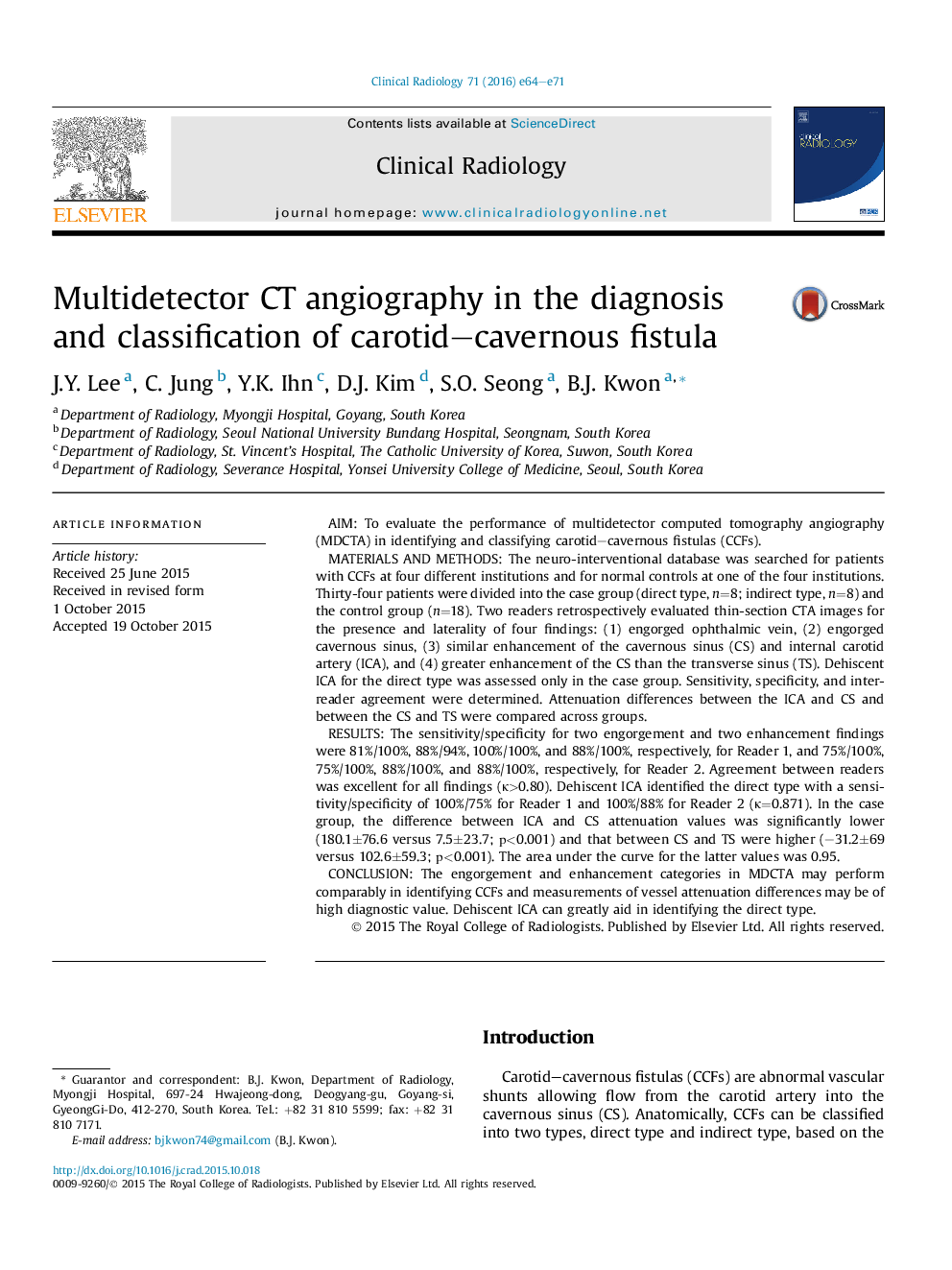| Article ID | Journal | Published Year | Pages | File Type |
|---|---|---|---|---|
| 3981450 | Clinical Radiology | 2016 | 8 Pages |
•We divided MDCTA findings of CCFs into 2 categories, enhancement and engorgement.•We measured attenuation differences of the cavernous sinus and other vessels.•Two categories perform comparably in identifying CCFs.•Vessel attenuation differences provide excellent performance in identifying CCFs.•“Dehiscent ICA” greatly aid in differentiating direct type from indirect type.
AimTo evaluate the performance of multidetector computed tomography angiography (MDCTA) in identifying and classifying carotid–cavernous fistulas (CCFs).Materials and methodsThe neuro-interventional database was searched for patients with CCFs at four different institutions and for normal controls at one of the four institutions. Thirty-four patients were divided into the case group (direct type, n=8; indirect type, n=8) and the control group (n=18). Two readers retrospectively evaluated thin-section CTA images for the presence and laterality of four findings: (1) engorged ophthalmic vein, (2) engorged cavernous sinus, (3) similar enhancement of the cavernous sinus (CS) and internal carotid artery (ICA), and (4) greater enhancement of the CS than the transverse sinus (TS). Dehiscent ICA for the direct type was assessed only in the case group. Sensitivity, specificity, and inter-reader agreement were determined. Attenuation differences between the ICA and CS and between the CS and TS were compared across groups.ResultsThe sensitivity/specificity for two engorgement and two enhancement findings were 81%/100%, 88%/94%, 100%/100%, and 88%/100%, respectively, for Reader 1, and 75%/100%, 75%/100%, 88%/100%, and 88%/100%, respectively, for Reader 2. Agreement between readers was excellent for all findings (κ>0.80). Dehiscent ICA identified the direct type with a sensitivity/specificity of 100%/75% for Reader 1 and 100%/88% for Reader 2 (κ=0.871). In the case group, the difference between ICA and CS attenuation values was significantly lower (180.1±76.6 versus 7.5±23.7; ⤳<0.001) and that between CS and TS were higher (–31.2±69 versus 102.6±59.3; ⤳<0.001). The area under the curve for the latter values was 0.95.ConclusionThe engorgement and enhancement categories in MDCTA may perform comparably in identifying CCFs and measurements of vessel attenuation differences may be of high diagnostic value. Dehiscent ICA can greatly aid in identifying the direct type.
